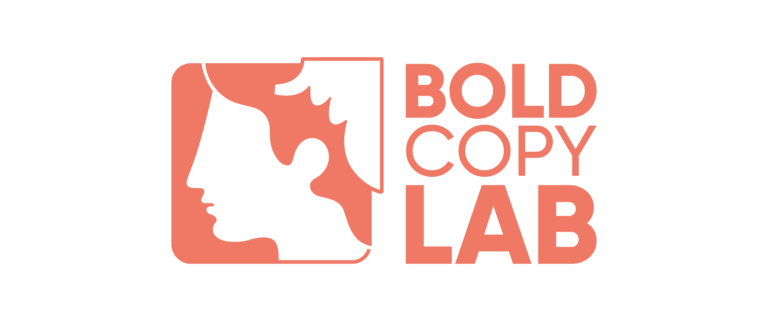A content management strategy involves devising a scheme to efficiently produce, share, and oversee content. Its objective is to fulfill the company’s objectives while satisfying the audience’s demands.
A robust content management strategy guarantees that your content is structured correctly, pertinent, and regularly refreshed. This method increases website visitors, boosts user interaction, and strengthens brand trust. Businesses can optimize their content creation processes by establishing precise content objectives, identifying their target audience, and selecting appropriate distribution channels.
Managing content effectively involves evaluating performance and implementing changes based on data analysis. Doing this guarantees that your content stays powerful and in tune with the changing market trends. By implementing a solid content management plan, you can enhance your digital footprint and foster sustainable business expansion in the long run.

The Significance of Strategic Content Planning
The strategy for managing content is essential in the world of digital media. It is a strategy that supports companies in generating, overseeing, and spreading content. The importance of content management strategy cannot be emphasized enough. It influences all aspects, from the expansion of businesses to the interaction with the audience, guaranteeing that the content is in harmony with the company’s objectives.
Expansion of a company
A clearly outlined content strategy propels business expansion through various avenues. Here are a few essential elements to consider:
- Increased Brand Exposure: Creating and sharing engaging content consistently can make your brand more noticeable. This entices a more significant number of visitors to your website.
- Generating Leads: Attracting potential customers is achieved through high-quality content. It has the potential to transform into new opportunities and revenue.
- Advantages of SEO: Frequently refreshed content enhances a website’s position on search engines. This boosts the flow of natural visitors.
Look at the table below to grasp the impact of content strategy on the expansion of a business.
| Aspect | Impact |
| Brand Awareness | Increases visibility and recognition |
| Customer Trust | Builds credibility and loyalty |
| Market Reach | Expands audience through various channels |
Content management strategy is essential for the goals of the business. It guarantees that each content piece plays a role in achieving the company’s objectives. This enhances the efficiency and concentration of the interaction.
Capturing the attention of the audience
Capturing the audience’s attention is a vital component of every content plan. Compelling material captivates your viewers, ensuring their continued interest and return visits. Here are a few methods to accomplish this:
- Understand who you are speaking to. Understand what they desire and what they prefer. Craft material that connects with their emotions.
- Produce content that engages the audience and allows them to participate actively. Employ quizzes, surveys, and engaging videos that require participation. This captivates the attention of the viewers.
- Maintain a regular schedule for sharing content. Frequent updates captivate your audience’s interest. They are anticipating new and original material.
- Compelling material results in increased sharing on social media platforms. Doing this can broaden your audience and draw in fresh supporters. Content created by users also enhances interaction. Motivate your listeners to open up and share their stories and opinions.
Here are some ways to gauge the level of interaction with your audience:
| Metric | Indicator |
| Comments | Shows how much the audience interacts |
| Shares | Indicates content popularity |
| Likes | Reflects audience appreciation |
A strong content plan boosts interaction with the audience. Doing this enhances the bond between your brand and its followers, nurturing loyalty and confidence.
Essential Elements for a Successful Content Management Plan
Developing a robust strategy for managing content is crucial for the effectiveness of every marketing campaign. It guarantees that your content aligns with your audience’s requirements and your business’s objectives. To craft a successful plan, it is crucial to grasp the various types of content, channels for distribution, and other essential elements. These components assist in generating, arranging, disseminating, and keeping valuable content.
Types of Content
Comprehending different types of content is essential for your plan. Various kinds of content fulfill distinct objectives. Below are a variety of typical types of content:
- Blog entries: Enlightening pieces that attract natural visitors.
- Videos are captivating visual representations that elucidate products or services.
- Infographics are artistic displays of information that help simplify intricate data.
- Podcasts: Engaging audio material for learning while on the move.
- eBooks are comprehensive manuals that help establish expertise in a particular subject.
Creating and planning content for each type requires a distinct and specialized approach. For example, when creating blog content, it is essential to conduct keyword analysis and craft captivating titles. Scripts and storyboards are necessary for making videos. Infographics demand a combination of precise data and artistic design abilities.
To efficiently handle these tasks, utilize resources such as editorial schedules and project organization applications. These instruments assist you in organizing, crafting, and sharing content promptly. A chart outlining different types of content and their requirements would be beneficial.
| Content Type | Planning Needs |
| Blog Posts | Keyword research, headlines, SEO |
| Videos | Scripts, storyboards, editing |
| Infographics | Data collection, design |
| Podcasts | Topics, guest planning, recording |
| eBooks | Research, writing, design |

Distribution Channels
The channels through which you distribute your content are crucial in determining its reach and impact on your audience. Ensuring that your efforts are recognized requires successfully distributing and promoting your content. These are the typical ways products are distributed:
- Social media encompasses platforms such as Facebook, Twitter, and LinkedIn.
- Newsletters by email: A direct way to deliver content to subscribers.
- SEO and Organic Search: Improving content for search engines.
- Enhancing content visibility through paid promotions.
- Syndicating content involves sharing and distributing published material on external platforms.
Every channel possesses unique advantages and disadvantages. Social media provides a broad audience yet demands consistent interaction. Newsletters via email help establish a dedicated following yet require captivating subject lines. SEO is like planting a seed that will eventually grow into a flourishing garden of organic traffic, although it requires patience to see the fruits of your labor.
Ensuring your content is well-organized and stored properly guarantees easy access for content distribution purposes. Utilize systems for managing digital assets to organize and classify your content. Maintaining a neatly arranged collection of content allows you to access and reuse material easily.
Ultimately, content governance and maintenance guarantee that your content remains current and timely. It is crucial to conduct routine inspections and keep information current. By doing this, you guarantee that your audience keeps receiving valuable content.
The process of crafting content.
Producing high-caliber content is crucial for the effectiveness of any content management plan. Generating content includes various stages, guaranteeing the result is captivating, educational, and pertinent to your target audience. Let’s delve into two essential elements of crafting content: exploration and strategic organization, as well as creative execution methods.
Investigation and strategic preparation
The phase of investigation and strategic thinking is the cornerstone of crafting content. If you do not conduct thorough research, your writing may lack focus and not connect with your readers effectively. These are the essential guidelines to adhere to:
- Determine who your target audience is. Identify the individuals for whom your message is intended. Develop detailed profiles of the target audience, including characteristics, hobbies, and challenges they face.
- Explore keywords using Google Keyword Planner, Ahrefs, or SEMrush. Discover key terms that are pertinent to your subject matter and target audience.
- Study the competition. Observe the strategies your rivals are employing. Detect the areas with missing elements and chances for improvement in their content.
- Outline of the Content. Develop a structured plan with main titles, subsections, and essential details. Following this will lead you through your writing journey and guarantee that all key subjects are addressed.
Here is a basic chart to outline the research and planning stages.
| Step | Description |
| Identify Your Audience | Define who you are writing for |
| Keyword Research | Find relevant search terms |
| Analyze Competitors | Study competitors’ content |
| Content Outline | Structure your content |
Production Techniques
After finishing the research and planning stage, you can delve into production methods. This stage consists of crafting, revising, and enhancing your content. Here are a few suggestions to guarantee that your content is top-notch:
- Craft content that is both straightforward and concise. You are helping to make texts more imaginative. Rewrite the text using more creative vocabulary and varied sentence structures while keeping the original meaning intact. Ensure that your writing is clear and accessible to your audience.
- Employ visual aids. Integrate visual aids such as pictures, charts, and multimedia content. The inclusion of images enhances the appeal of your content and facilitates understanding.
- Review and revise: Ensure accuracy in grammar and spelling. For that, you can use Grammerly.
- Enhance search engine optimization. Make sure to integrate important terms into your writing seamlessly. Enhance your Spanish texts with captivating titles, engaging summaries, and descriptive text for images.
In short, here is a chart highlighting the main production methods.
| Technique | Description |
| Write Clear Content | Use simple language and short sentences |
| Use Visuals | Incorporate images and videos |
| Edit and Proofread | Check for errors and improve readability |
| Optimize for SEO | Use keywords and meta descriptions |
Content Governance
A robust content management strategy guarantees that your online content aligns with your business objectives and fulfills the requirements of your audience. Content governance is a crucial element of this strategy. It establishes the guidelines, responsibilities, and procedures for efficiently handling your content. Content management ensures high standards, uniformity, and adherence to regulations on every online platform.
Duties and Obligations
To ensure successful content management, it is essential to have well-defined roles and responsibilities. All participants need to know their duties and understand how they add value. This transparency prevents misunderstandings and guarantees responsibility.
These are the key positions that need to be filled:
- Content strategist: Designs and monitors content strategy to align with business objectives.
- Content creator: Generates top-notch material that captivates viewers.
- Editor: Enhances and polishes content to ensure its excellence and uniformity.
- SEO Specialist: Ensures that content is optimized for search engines.
- Compliance officer: Ensures the content complies with all legal and regulatory requirements.
- Project manager: Schedules and organizes activities to ensure the project stays on course.
Within a vast institution, positions tend to become more focused and specific. A table can be helpful in elucidating roles and duties.
| Role | Responsibilities |
| Content Strategist | Develops and implements content strategies. |
| Content Creator | Writes, designs, and produces content. |
| Editor | Reviews and edits content for quality. |
| SEO Specialist | Optimizes content for search engines. |
| Compliance Officer | Ensures content meets legal standards. |
| Project Manager | Manages timelines and coordinates tasks. |
Approval Workflows
Efficient approval processes are essential to uphold the quality of content. They make sure that all content undergoes the required inspections before being released.
A standard sequence of steps in an approval process comprises the following:
- Content creators craft and bring the content to life.
- Editors carefully examine the content to ensure its quality and coherence.
- SEO specialists enhance the content to make it more visible to search engines.
- Compliance officers carry out verification of legal and regulatory compliance.
- Project managers or content strategists grant the ultimate green light.
- Content given the green light is shared on the selected platforms.
Counting with a digital instrument to handle these processes can bring advantages, such as assisting in monitoring the advancement of the content and guaranteeing prompt approvals. By using automated alerts, team members can be prompted about tasks that still need to be completed, ensuring that everyone is well-informed and in sync.
Approval processes also contribute to keeping operations transparent. The progress of the content and the individuals accountable for each stage are visible to all. This clear visibility promotes responsibility and guarantees that deadlines are achieved.
Quantifying Achievement
To develop an effective content management strategy, you must assess its performance. Evaluating achievements allows you to grasp the effectiveness of different methods and identify areas for improvement. This assists you in making well-informed choices for upcoming content.
Indicators of Performance and Key Performance Indicators
Metrics and Key Performance Indicators (KPIs) are crucial for evaluating your content’s effectiveness. They provide valuable information about how well your content is performing. Here are some key indicators to take into account:
- Page Views: The frequency with which visitors see a page.
- Unique visitors: The number of individual users who access your website.
- Average time on page: The period users spend on a page.
- Bounce rate: The proportion of visitors who exit the website after seeing just one page.
- Conversion rate: The proportion of individuals who accomplish a specific goal.
Monitoring these indicators allows you to grasp user actions and patterns. This allows you to adjust your content to enhance interaction.
| Metric | Importance |
| Page Views | Shows how popular your content is |
| Unique Visitors | Indicates the reach of your content |
| Average Time on Page | Measures user engagement |
| Bounce Rate | Indicates content relevancy |
| Conversion Rate | Measures effectiveness in achieving goals |
Frequently checking these key performance indicators guarantees that your content strategy stays on course. Modify your approach according to the knowledge acquired.
Tools for analyzing data
To evaluate achievement, it is essential to have trustworthy tools for analysis. These instruments assist you in monitoring and examining your data points. Among the most well-liked analytics tools are:
- Google Analytics provides in-depth information about the flow of visitors to a website and how users interact with it.
- SEMrush offers a detailed analysis of search engine performance and reveals information about competitors.
- Ahrefs specializes in analyzing backlinks and evaluating SEO effectiveness.
- HubSpot combines marketing, sales, and service analytics into one seamless system.
- Hotjar: Represents user actions using heat maps and session records.
Every tool possesses unique capabilities. Google Analytics is commonly employed to monitor the flow of visitors on websites. SEMrush and Ahrefs are outstanding tools for analyzing SEO. HubSpot provides a comprehensive perspective on marketing endeavors. Hotjar allows you to understand user interactions on your website.
Utilizing these resources enables you to collect valuable and practical information. This information is essential for enhancing your approach to content creation. Select the tools that align most with your requirements and objectives.
Strategies for Distributing Content
Crafting exceptional content is merely the initial phase in a triumphant content management strategy. The following essential task involves guaranteeing that your content connects with the appropriate audience. This is when content distribution strategies take center stage. These tactics center on different avenues for distributing your content, aiming to boost its exposure, interaction, and conversion levels.

Social media
Social media represents a potent instrument for disseminating your content. Every platform caters to a distinct audience and showcases a specific content style. Comprehending these subtle differences can assist you in customizing your content to achieve the most significant effect.
Here are some suggestions for efficiently sharing content on social media:
- Understand the people you are addressing: Investigate the population characteristics of each social media platform. Instagram captivates a youthful demographic, whereas LinkedIn caters to a professional audience.
- Incorporating visuals, such as images or videos, into your posts can increase interaction and participation. Using infographics, brief videos, and captivating images can help your content grab attention.
- Share your content during peak hours. Every platform experiences moments of maximum user engagement. Platforms such as Sprout Social can assist you in discovering the optimal moments for sharing your content.
- Interact with your audience: Engage with them by replying to their comments, joining conversations, and using interactive tools such as polls to enhance interaction.
Here is a handy chart with the best times to post.
| Platform | Best Time to Post |
| Wednesday, 11 AM – 1 PM | |
| Wednesday, 11 AM; Friday, 10-11 AM | |
| X | Wednesday, 9 AM; Friday, 9 AM |
| Wednesday, 8-10 AM, 12 PM |
Email marketing
Email marketing is a powerful method to disseminate your content. It enables you to connect with a specific audience by sending messages directly to their email. The essential elements for a triumphant email marketing plan are customization and sending immediately.
Take into account these tactics for successful email marketing:
- Divide your list into sections. Segment your email list into groups based on user behavior, interests, or demographics. This aids in delivering content tailored to each group’s specific interests.
- Craft captivating email titles: The headline is the initial element that catches the attention of those who receive it. Craft a compelling message to boost the number of people opening it.
- Make sure to incorporate explicit calls to action. Every email needs to include a distinct and compelling call to action. Ensure that the following action, whether it involves reading a blog entry or enrolling in a webinar, is indicated.
Take a look at this chart, which displays metrics for email marketing.
| Metric | Good Benchmark |
| Open Rate | 20-30% |
| Click-Through Rate | 2-5% |
| Conversion Rate | 1-2% |
By implementing these tactics, you can guarantee that your message connects with your target audience, leading to increased interaction and outcomes.
SEO and content
Developing a solid content management strategy is essential for any company looking to boost its visibility on the internet. One crucial aspect of this plan involves combining SEO and content seamlessly. SEO guarantees that your content connects with the appropriate audience while engaging content maintains their interest. Collaboratively, they boost natural website visits and enhance their position in search engine results.\

Keyword research
Conducting thorough keyword research is essential for laying a solid groundwork for a successful SEO plan. The task consists of recognizing your desired audience’s specific words and expressions when looking for information connected to your company. By grasping these key terms, you can craft material that connects with your viewers and achieves better positioning in search engine outcomes.
Below are the guidelines for conducting a thorough keyword investigation:
- Generate ideas for discussion. Consider the preferences of your audience.
- Use keyword tools. Resources such as Google Keyword Planner, SEMrush, and Ahrefs are valuable aids in discovering pertinent keywords.
- Examine the competition: Examine the key terms your rivals dominate in search engine rankings.
- Direct your attention to long-tail keywords, as they typically face less competition and boast superior conversion rates.
Here is a chart that outlines a selection of handy instruments for conducting keyword investigations.
| Tool | Features |
| Google Keyword Planner | Free, provides search volume and competition levels |
| SEMrush | Comprehensive keyword analysis, competitor insights |
| Ahrefs | Extensive keyword database, backlink analysis |
On-page Optimization
On-page optimization entails adjusting your content and HTML code to enhance its appeal to search engines. By following this step, you guarantee that your content stands out for its excellence and is readily accessible.
Crucial components of optimizing on-page content encompass:
- Enhance the visibility of your content by incorporating your main keyword into the title tag.
- Create captivating meta descriptions that incorporate your desired keyword.
- Employ H1, H2, and H3 tags to organize your content coherently.
- Provide a brief description of your images using appropriate terms.
- Enhance navigation and SEO by incorporating internal links that direct users to other pertinent pages on your website.
Enhancing these components guarantees that your content is user-friendly and SEO-friendly, leading to a substantial increase in your search engine rankings.
Future Trends
Content management strategy is evolving rapidly, and companies need to stay informed to remain competitive. Two key trends driving this evolution are artificial intelligence in content creation and interactive content.
Artificial intelligence (AI) is transforming content management, enhancing the efficiency and precision of content production and distribution. Here are some ways AI is revolutionizing content creation.
- Content creation: Artificial intelligence tools such as GPT-3 can produce articles, blog entries, and updates for social media. By doing this, time is saved, and uniformity is guaranteed.
- Content Personalization: Artificial intelligence examines user data to offer personalized content. This enhances involvement and user contentment.
- AI tools are utilized to enhance content for search engines through SEO optimization. They propose enhancing keywords, meta tags, and structural adjustments.
- Content analytics is another area where AI plays a crucial role. It can monitor and forecast the success of content. This empowers decisions based on data and allows for strategic adaptations.
Here is a chart showcasing the various uses of artificial intelligence in content creation.
| AI Application | Benefit |
| Content Generation | Speeds up content creation |
| Personalization | Increases user engagement |
| SEO Optimization | Improves search rankings |
| Analytics | Data-driven decisions |
The power of artificial intelligence is a game-changer. It enhances productivity and ensures the relevance of the content. Incorporating artificial intelligence into your content strategy can give you a competitive edge. Nevertheless, when it comes to SEO, utilizing AI-identified content can have a negative impact. Search engines might punish content that seems too automated because it could be missing the human element needed for high quality and interaction. The key to ensuring robust search engine performance is finding a balance between using AI effectively and incorporating originality and human input.
Interactive Content
The rise in popularity of interactive material is becoming more evident. Dynamic content captivates users better than content that remains unchanged. Here are various types of engaging content:
- Assessments to test your knowledge: Taking quizzes can be an enjoyable and interactive experience. They can offer valuable perspectives on user preferences as well.
- Surveys: Surveys motivate users to get involved. They provide a rapid method for collecting opinions and feedback.
- Interactive videos allow users to make decisions that influence the outcome and ensure the audience remains captivated and actively participating.
- Engaging material also enhances the ability of users to stay interested. Interactive pages capture users’ attention for extended periods, potentially improving your website’s search engine optimization.
Here are a few advantages of engaging content:
| Benefit | Explanation |
| Higher Engagement | Users interact with content actively |
| Better Data Collection | Gather insights from user interactions |
| Improved SEO | Longer user sessions improve rankings |
The use of interactive material goes beyond being a fad. It is increasingly essential. It helps your content shine and ensures that users return for more.
Benefits Of A Well-executed Content Management Strategy
Developing a robust plan for managing content is essential for any company aiming to succeed in the online environment. A carefully planned approach simplifies the process of creating content and enhances its effectiveness. Let’s discover the countless advantages of a well-executed content management strategy.
Enhanced Quality and Uniformity of Content
A carefully planned strategy for managing content guarantees top-notch content on every platform. Businesses can ensure a uniform tone and message by establishing precise guidelines and standards. Establishing a sense of reliability fosters confidence among viewers and boosts the brand’s visibility.
Some of the main advantages are:
- Consistent tone: A consistent and unvarying tone throughout all written materials.
- Ensuring content stays current and beneficial is achieved through consistent evaluations and revisions in quality control.
- Involvement: Captivating content draws in and maintains the interest of the audience.
Furthermore, incorporating a systematic evaluation procedure can improve the precision of the content and minimize mistakes.
| Benefit | Impact |
| Consistent Voice | Builds brand trust |
| Quality Control | Increases content value |
| Engagement | Boosts audience retention |
Enhanced Collaboration And Efficiency
Fostering teamwork and enhancing productivity are key benefits of a well-rounded content management plan. When team members have straightforward tasks and duties, they can collaborate more efficiently, minimizing redundant work.
Some of the main benefits are:
- Defined responsibilities: Each individual is aware of their duties, enhancing collaboration.
- Optimized processes: Streamlined workflows result in time and resource savings.
- Enhanced communication: Teams remain in sync by providing frequent updates and engaging in feedback loops.
Teams can enhance their efficiency in sharing updates, monitoring progress, and handling deadlines by using collaborative tools and platforms.
| Advantage | Effect |
| Clear Roles | Enhanced teamwork |
| Streamlined Processes | Time and resource savings |
| Improved Communication | Better alignment |
Increased Content ROI And Measurable Results
A well-thought-out plan for managing content results in increased ROI and tangible results. Businesses can monitor and assess the effectiveness of their content by establishing precise goals and key performance indicators (KPIs).
Some of the main advantages are:
- Tailoring content to suit the audience’s needs enhances interaction and boosts conversion rates.
- Decisions based on data: Analytics offer valuable information to enhance upcoming content.
- Efficiency in costs: We can avoid unnecessary spending by optimizing current resources.
By employing analytical tools and reporting mechanisms, companies can evaluate the effectiveness of their content and make necessary adjustments to their strategies.
| Benefit | Impact |
| Targeted Content | Higher engagement |
| Data-Driven Decisions | Optimized strategies |
| Cost Efficiency | Reduced expenses |
Frequently Asked Questions
What does a content management strategy entail?
A strategy for managing content involves devising a scheme to generate, structure, and sustain content. It guarantees that the content is in harmony with the company’s objectives. Enhancing user experience and optimizing content workflows are benefits of this approach.
What makes content management strategy so important?
Crafting a strategic content plan is essential to ensure the continuous delivery of valuable and consistent content. Captivating your audience and bolstering your business goals is vital. An accurately outlined plan boosts a brand’s trustworthiness and increases the flow of visitors.
What is the process for creating a content strategy?
Creating content strategy involves establishing objectives, comprehending your target audience, and outlining the content. It consists of choosing the appropriate tools and evaluating effectiveness. The essential elements are ongoing assessment and adaptation.
Which instruments are beneficial for managing content?
WordPress, HubSpot, and Contentful are the most widely used tools for managing content. These instruments streamline the process of generating, arranging, and sharing content. They provide services such as enhancing SEO and monitoring analytics.
Do we provide Content Strategy Services?
Yes, Bold Copy Lab provides Content Strategy Services. As you know Bold Copy Lab is a content marketing company that offers a variety of services including website localization, content creation, SEO content writing, and translation services.
Final thoughts
A strong plan for managing content is crucial for the development of a company. It enhances interaction and generates visits. Give importance to well-defined goals, top-notch material, and consistent refreshing. By following these guidelines, you can significantly improve your visibility on the internet. Maintain a steady dedication, witness your brand flourish, and embrace a strategic plan for future prosperity.
In the current highly competitive digital environment, content is a potent weapon you can use to your advantage. By developing a strategic approach that is both reflective and flexible, you establish credibility with your audience and establish your brand as a pioneer in the field. A strategy that constantly adapts to market trends and the audience’s demands guarantees that your message stays current and effective.
Keep in mind that success is not achieved overnight. It is a slow journey that demands perseverance, ingenuity, and a steadfast dedication to providing worth. When you prioritize content management, you are establishing the groundwork for enduring success that will yield benefits in the long run.











